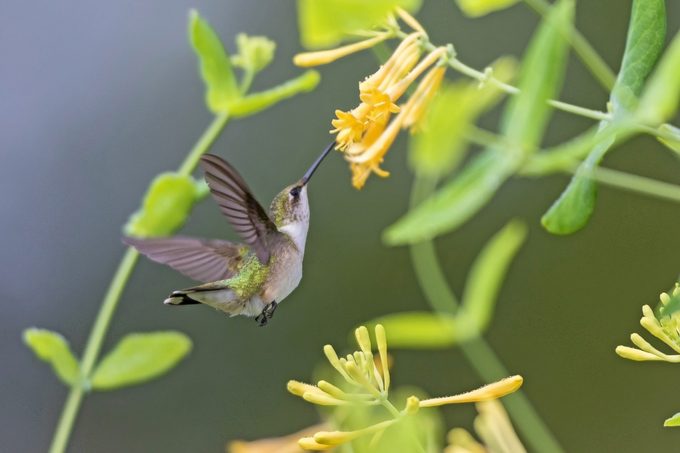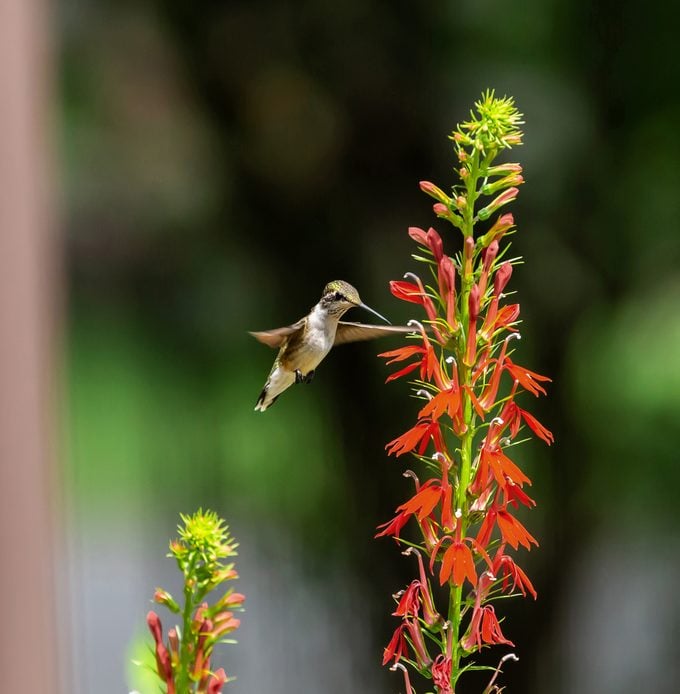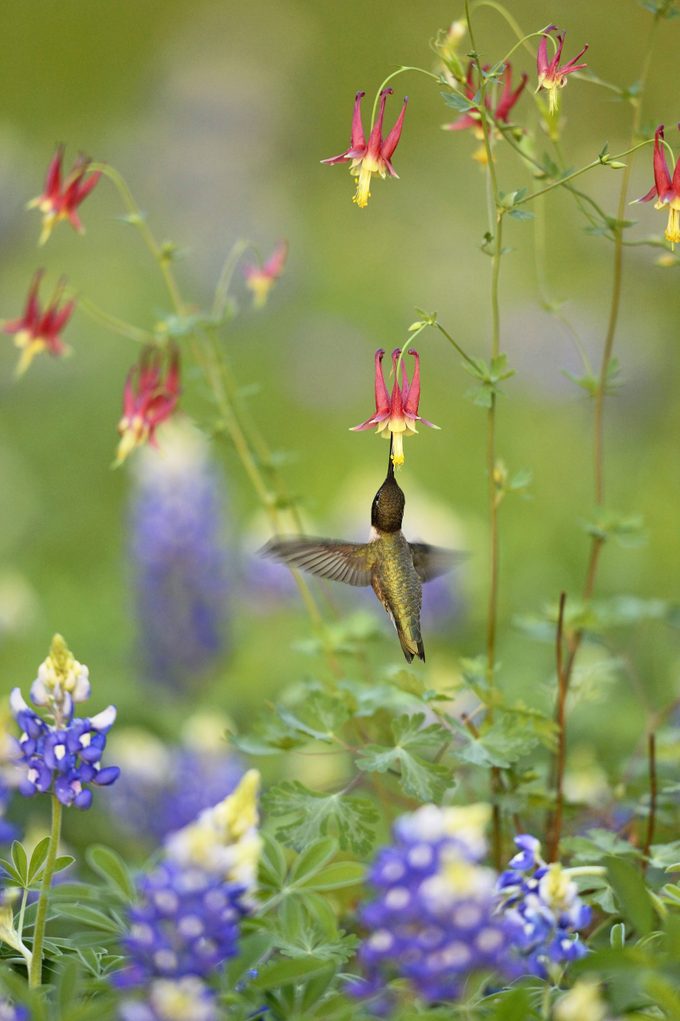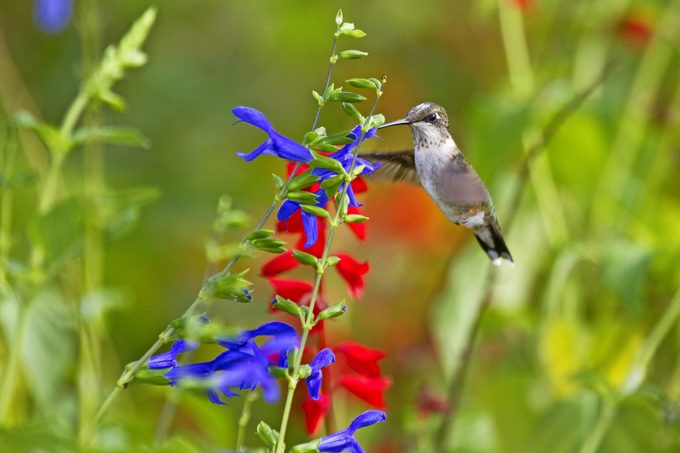The Best Perennials to Grow for Hummingbirds
Updated: May 04, 2022
Attract pollinators year after year with the best perennials for hummingbirds. These plants take less time, work and money than annuals.
Hummingbirds Love Perennials

Sugar-water feeders are one way to attract hummingbirds, but an even better bet is an abundance of vibrant plants growing in your garden. Plant the best perennials for hummingbirds to keep these pretty pollinators coming back each year.
“If we want to truly support birds, our first instinct must be to create native habitat,” says Becca Rodomsky-Bish, a project leader for the Cornell Lab of Ornithology. “While sugar-water feeders are a fun way to pull birds in close to our homes, they don’t resolve the long-term issue that many birds such as hummingbirds can have, which is where to forage for native food resources.”
Hummingbirds may consume about half their body weight in nectar each day, feeding approximately every 10 to 15 minutes. (They also eat small insects, especially during nesting season.) All that sipping means they require access to many blooms every day and hummingbirds can be very territorial about their favorite food sources.

Native perennials are a terrific option to fill that demand. “Plants that are attuned to your region will bloom and produce what is needed, when it is needed,” Becca says. “Provide a variety of plants that produce flowers at different times in the season to best align with the resources hummingbirds require to successfully recover after long migrations, raise their young and fuel up to prepare for their fall migrations.”
Most North American hummingbirds migrate farther south for winter. They make long journeys in spring and fall and need ample food along the way. Native perennials’ bloom cycles ensure that your garden is stocked with nectar throughout the seasons.
Check out the top 10 annuals that attract hummingbirds.
Grow the Best Perennials for Hummingbirds

For the best perennials that attract hummingbirds, one type tends to be better than all the rest.
“Hummingbirds prefer plants that produce tube-shaped flowers, as they generally contain the most nectar,” says Becca. And while the old wisdom about plants with red flowers holds true, she promises that hummingbirds will visit blossoms of any hue, as long as they provide plenty of nectar.
Adding perennials for hummingbirds is an easy way to benefit both birds and humans. We get the joy of seeing these colorful jewels up close. And hummingbirds find a more robust environment that provides food and shelter. As Becca says, “Adding native perennials pays it forward for generations of wildlife.”
Discover the top 15 colorful hummingbird flowers to grow.
How to Choose Perennials

In most regions, perennials go dormant for the colder months and their shoots grow anew in spring. In warmer zones, perennials are often evergreen, though they may only bloom in certain months. Either way, perennials tend to require a little less maintenance and cost than replanting annuals each year.
Psst—here’s the difference between annuals and perennials.
Since perennials are going to be with you for the long haul, be sure to choose them carefully. Do some research before buying. A potted plant that looks pretty at the nursery could turn into a monster that spreads underground or crowds out everything nearby. Look at tags to find out how tall and wide a plant will get.
Also, talk to a nursery specialist about whether the perennial is fast-growing, which might mean it requires more pruning or dividing each year.
As with any shrub, tree or flower, review the requirements for sun, water and soil type. Choose some flowering plants, such as bleeding hearts or columbines, specifically for shady spots in your yard. If you really love a plant but are worried about the conditions it needs, try growing the perennial in a container instead of straight in the ground. This allows you to control the soil type and amount of sun the plant receives.
Learn how to attract hummingbirds to your small garden.
Our Favorite Hummingbird Perennials

These nectar-producing plants are easy to grow and produce blooms year after year.
- Beardtongue, Zones 4 to 9
- Bee balm, Zones 3 to 8
- Butterfly weed, Zones 3 to 9
- Cardinal flower, Zones 3 to 9
- Chuparosa, Zones 8 to 11
- Columbine, Zones 3 to 9
- Goldenrod, Zones 3 to 9
- Native honeysuckle, Zones 3 to 10
- Phlox, Zones 3 to 9
- Salvia, Zones 3 to 11
Not sure how garden zones work? Learn more and find your plant zone.
How to Care for Perennials
Generally perennials are easier to care for than annuals, perennials do require a little maintenance after they’re planted and once established.
Some types, especially those that grow from rhizomes or bulbs, should be divided every few years. Dig them up, roots and all, then use a sharp spade to split them apart into smaller sections. Spread them out and replant.
Perennial shrubs may need pruning each year, but be sure to research the right time for this chore. Many spring flowering shrubs such as lilacs set buds early in summer, so if you prune late in the growing season, you could end up with no blooms the following year.
Next, learn why you should add a bird bath for hummingbirds to your yard.




















